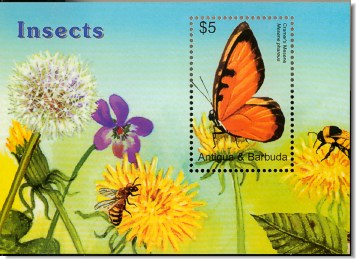This letter is in response to Julee Boan’s excellent article about Ontario’s Endangered Species Act (Paying the Interest, Ignoring the Debt — CJ, Nov. 29). This act is extremely important and we ignore it at our peril. In towns and cities we have animal humane societies that ensure that the animals under our care in our homes are given the best protection we can offer. The animals, fish and insects in our wilderness are no less deserving. The act should be their voice to protect them from the harmful impacts of mining, fossil-fuel extraction, forestry, fishing and farming, not for the protection of these same industries. These impacts are real and can be devastating. Two examples from farming have come to my attention lately. Both were preventable.
1. This summer a beekeeper interviewed on CTV’s Canada AM broke down in tears as he described the effect of the pesticide neonicotinoids on his bees. A nearby farmer planted his fields with seeds coated with this pesticide. When his bees went to pollinate the crop 37 million of them died. The European Union has banned three types of this pesticide for two years to study the harmful effect it has on bees. Canada has not. The bee is becoming a species at risk. No bees — no pollination — no food. This affects us. Who speaks for the bees? What law protects them?
2. On Nov. 27, Prof. Brian Norris was interviewed on As It Happens on CBC Radio. He is a migration ecologist with Guelph University. Norris has been studying the Monarch butterfly for years and what he had to say was chilling. Two years ago, 350 million Monarchs migrated back to their valley in Mexico. Last year only 60 million did and this year only 3 million showed up.
The cause of their decline seems to be related to the destruction of the plant milkweed which is critical to their reproductive cycle. Milkweed is considered to be a noxious weed and aggressive measures are being taken by farmers to eliminate weeds to increase crop yields.
Crops are genetically modified to be resistant to the herbicide Round-Up. Fields are then sprayed with Round-Up to eliminate all weeds while leaving the crop itself intact. Roadside milkweed is also cut down to prevent its spread.
This poses a problem to the Monarch which can’t find the milkweed on which to lay its eggs. To them milkweed is not a weed, it is life. No milkweed — no eggs — no Monarchs.
Could they bounce back from this? It seems unlikely. The few remaining Monarchs not only have to find mates that are now spread too thin but if they do succeed they have to find what is now increasingly rare milkweed. It would take a miracle. The Monarch has become a critical species at risk. Who speaks for the Monarch? What law protects them?
So while the world has campaigns to save the panda, the whale, the elephant, the polar bear, the gorilla and the shark, it could be that the Monarch becomes the poster child for extinction in the 21st century.
I am so angry. I am so bitter. I am so heartsick. I am so sorry. Beautiful Monarch may you rest in peace. Now, who’s next?
Source: Lucy Laframboise, Thunder Bay in The Chronicle Journal, 7 December 2013 http://www.chroniclejournal.com/editorial/letters/2013-12-07/bees-and-b…

- Log in to post comments
